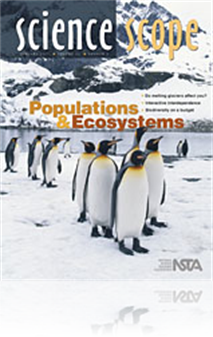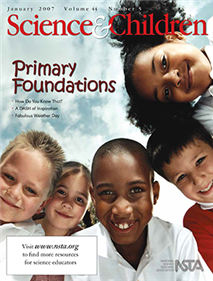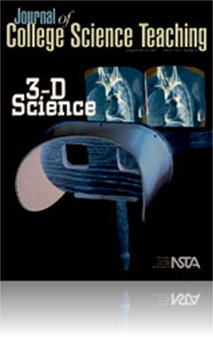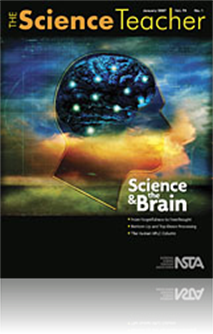All Resources
Journal Article
After the Bell: Making a community information guide about nonpoint source pollution
A good slogan to introduce this project is “think globally, act locally.” The purpose of the project is to inform students that the actions they take at home may have a far-reaching effect. The assignment will help to create community awareness a...
Journal Article
Student interest in science has been amplified at one elementary school. During a recent unit on sound, students in a fourth-grade class participated in a series of dynamic sound learning centers followed by a dramatic capstone event— an exploratio...
Journal Article
Research and Teaching: Small-Group Peer Teaching in Introductory Biology Classroom
All teachers want their students to learn, enjoy, and be engaged in their classes. A good way to create such results is to incorporate active learning approaches into classrooms. Many teachers, however, do not know how to start making these changes a...
Journal Article
To adequately prepare future faculty for their multiple roles as researchers, teachers, and colleagues, innovative teaching opportunities must be made available to doctoral students that allow them to maintain a high level of research productivity ...
Journal Article
Using Science Fiction Movie Scenes to Support Critical Analysis of Science
This article discusses the pedagogical advantages and challenges of using science-fiction movies and television shows in an introductory science class for elementary teachers. Two instructional episodes are described in which scenes from the movies R...
Journal Article
Teacher’s Toolkit: Making the most of concept maps
A concept map is a two-dimensional, graphic or schematic diagram illustrating the interconnections, and often the hierarchy, of a particular concept or topic. Concept maps are especially important in teaching science because they depict the interrela...
Journal Article
Tabizi Pythons & Clendro Hawks: Using Imaginary Animals to Achieve Real Knowledge about Ecosystems
In the engaging unit described here, imaginary organisms are used to teach a variety of topics related to ecosystems—food chains and energy flow, food webs, limiting factors, carrying capacity, and the effects of natural and human-made events on ec...
Journal Article
We have all sat in classes in which a teacher made a difficult or abstract concept understandable by using an analogy. Science classes are full of abstract or challenging concepts that are easier to understand if they are related to something from ou...
Journal Article
Scope on Safety: Is safety included in your science activity kits?
For some school districts, the convenience, organization, curriculum scope, and sequence provided by science kits make them a tempting choice for incorporating hands-on, process- and inquiry-based science in the classroom. When teachers consider adop...
Journal Article
Classroom Applications of Top-Down & Bottom-Up Processing
Recent research in cognitive neuroscience has yielded a more comprehensive understanding of brain function. The advances in neuropsychological research have greatly added to our understanding of top-down and bottom-up processing. However, top-down an...
Journal Article
Science Sampler: Ozone notebook
To combat the problems associated with high levels of ground-level ozone, the Clean Air Act of 1970 called on all government agencies to take measures to reduce ground-level ozone in our air to 120 parts per billion (ppb). Detection of ozone levels i...
Journal Article
Society for College Science Teachers: Finding Time Through Specialization
As part of the Early Career Development Program at the Institute of Teaching and Learning Excellence, colleagues presented a segment entitled Managing My Course. Among the key points was the notion that effective classroom management helps provide t...
Journal Article
Editor’s Roundtable: Granny knew best!
If our citizens are ever to be effective stewards of our environment, acting responsibly needs to be modeled and taught at home, and reinforced by the school and the rest of the community. We must also get our students out of the classroom and into t...
Journal Article
Science Sampler: Bubbles on a soda can: A demonstration of Charles’s Law
The bubbles-on-a-soda can activity is an illustration of Charles’ law, which states that for a fixed amount of gas, there is a direct relationship between the temperature of the gas and its volume. In other words, if the temperature of a fixed amou...
Journal Article
When most of us think about how we learned science, we generally remember it as a textbook-based affair, with experiments set-up in advance by a teacher. We tend to think of science as a body of facts to be memorized and of inquiry as a set of teache...






